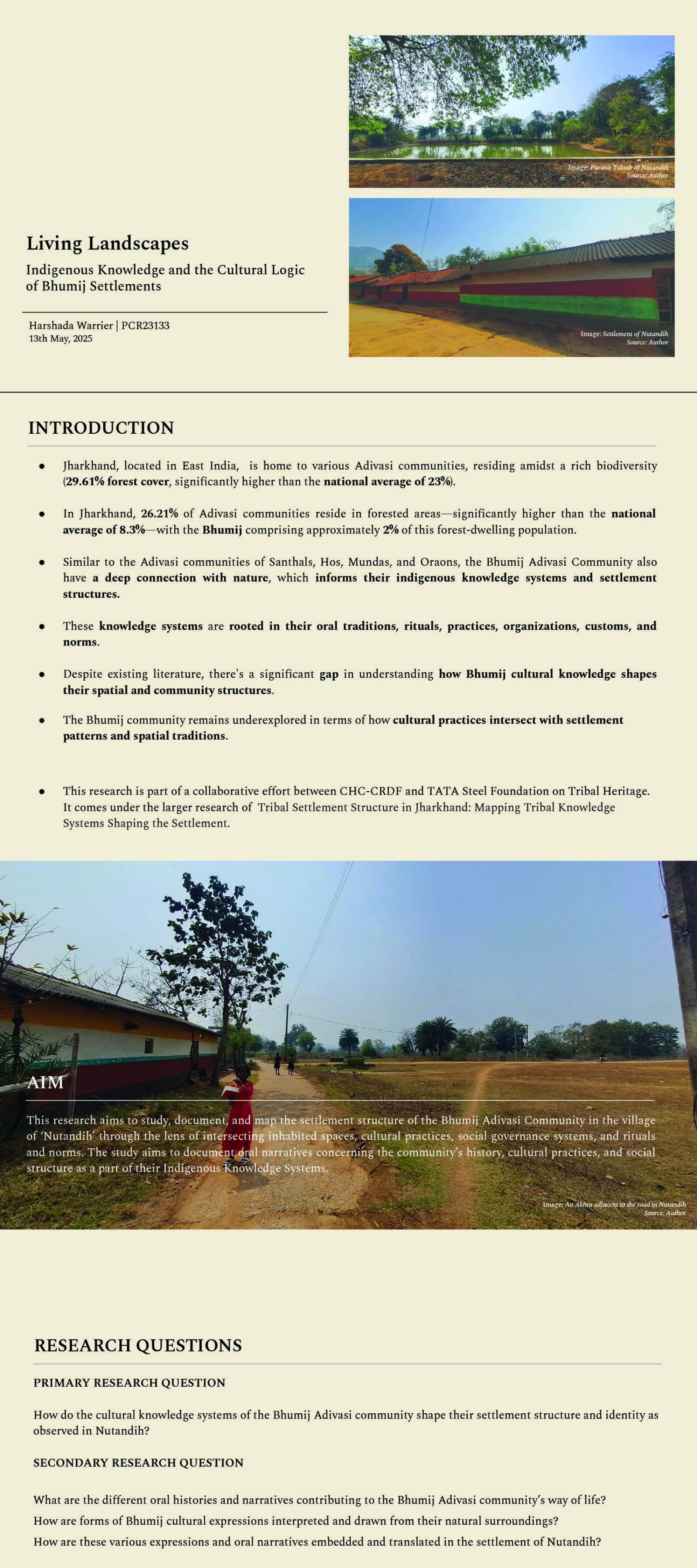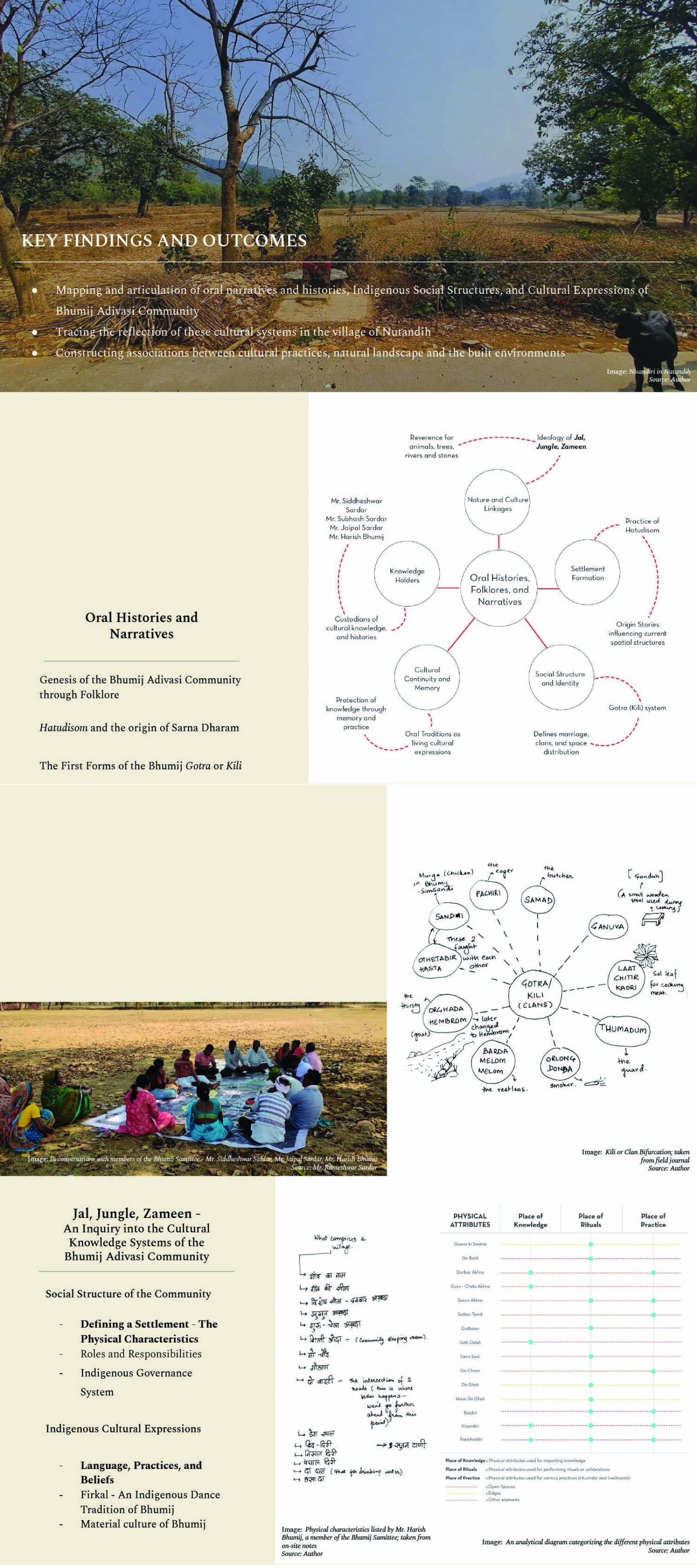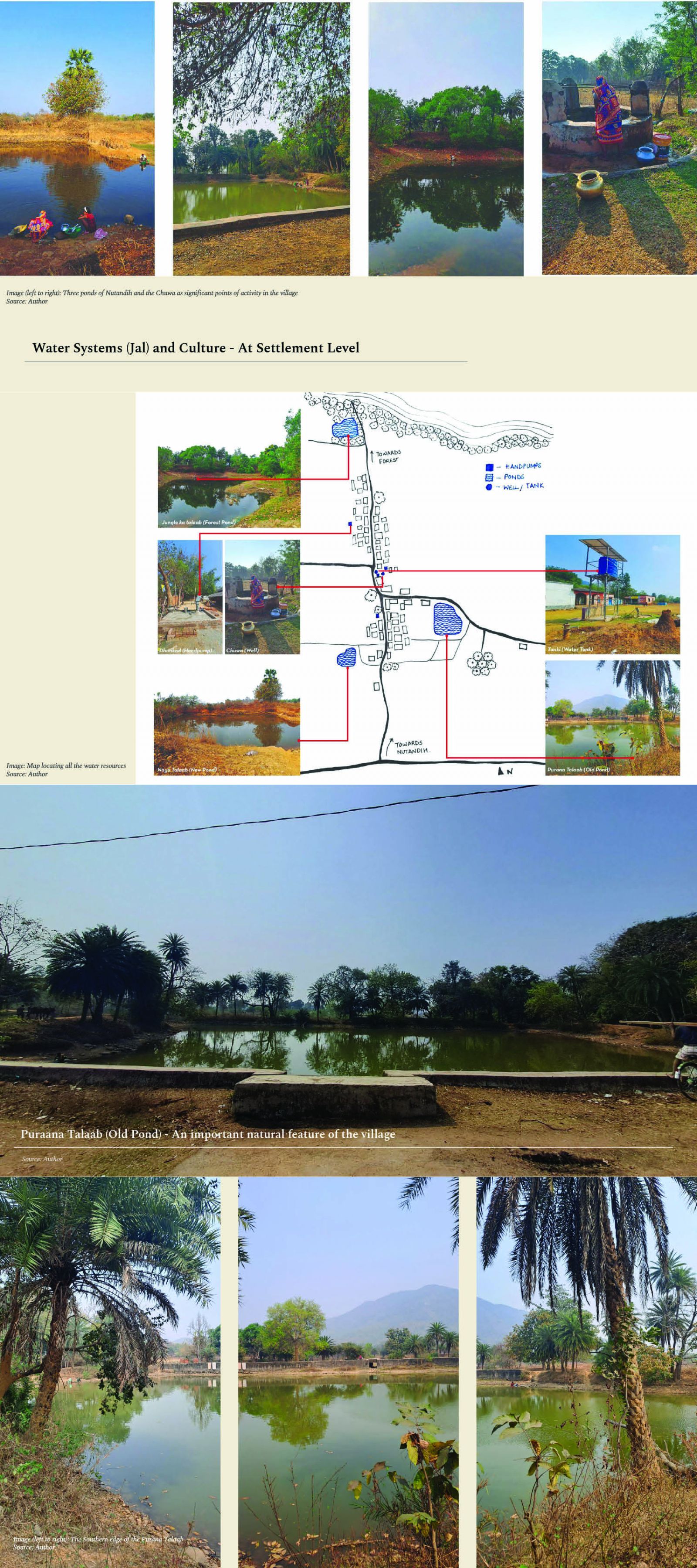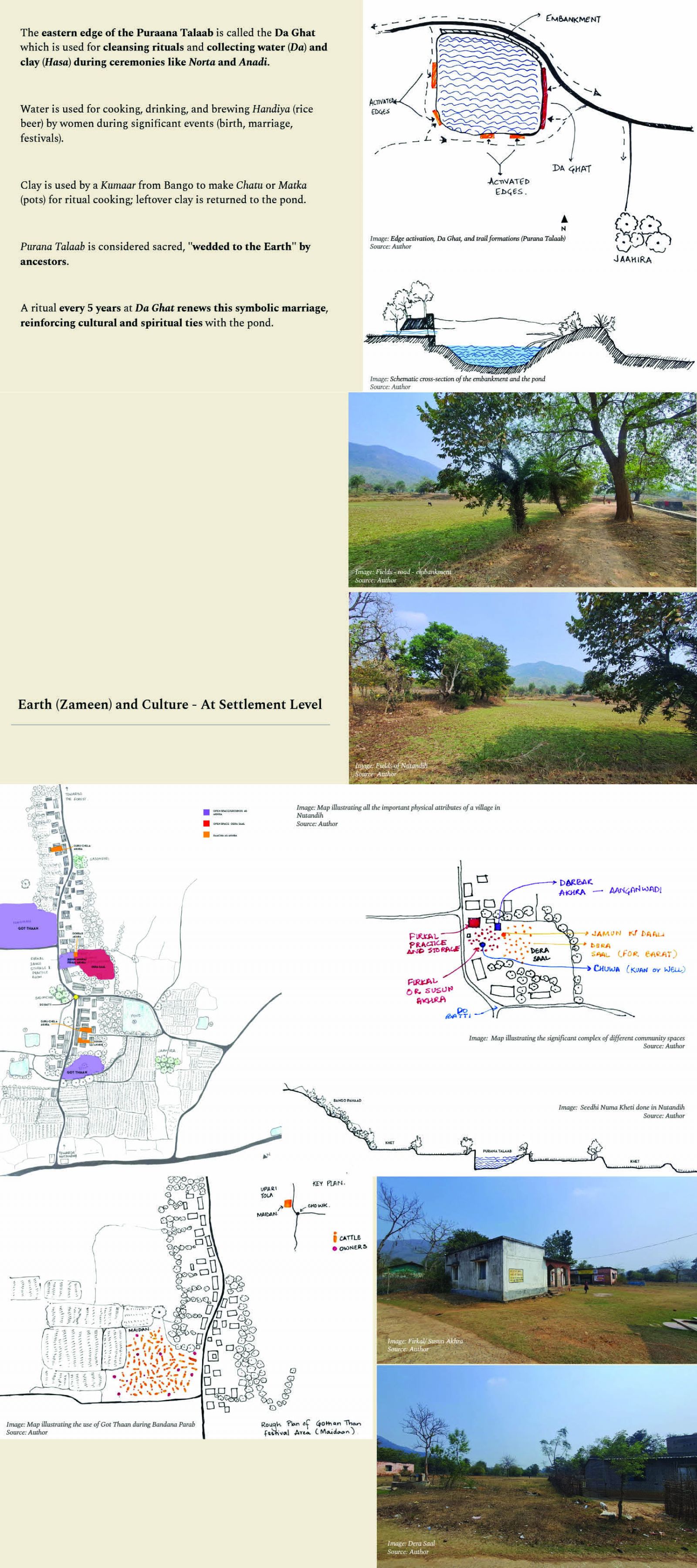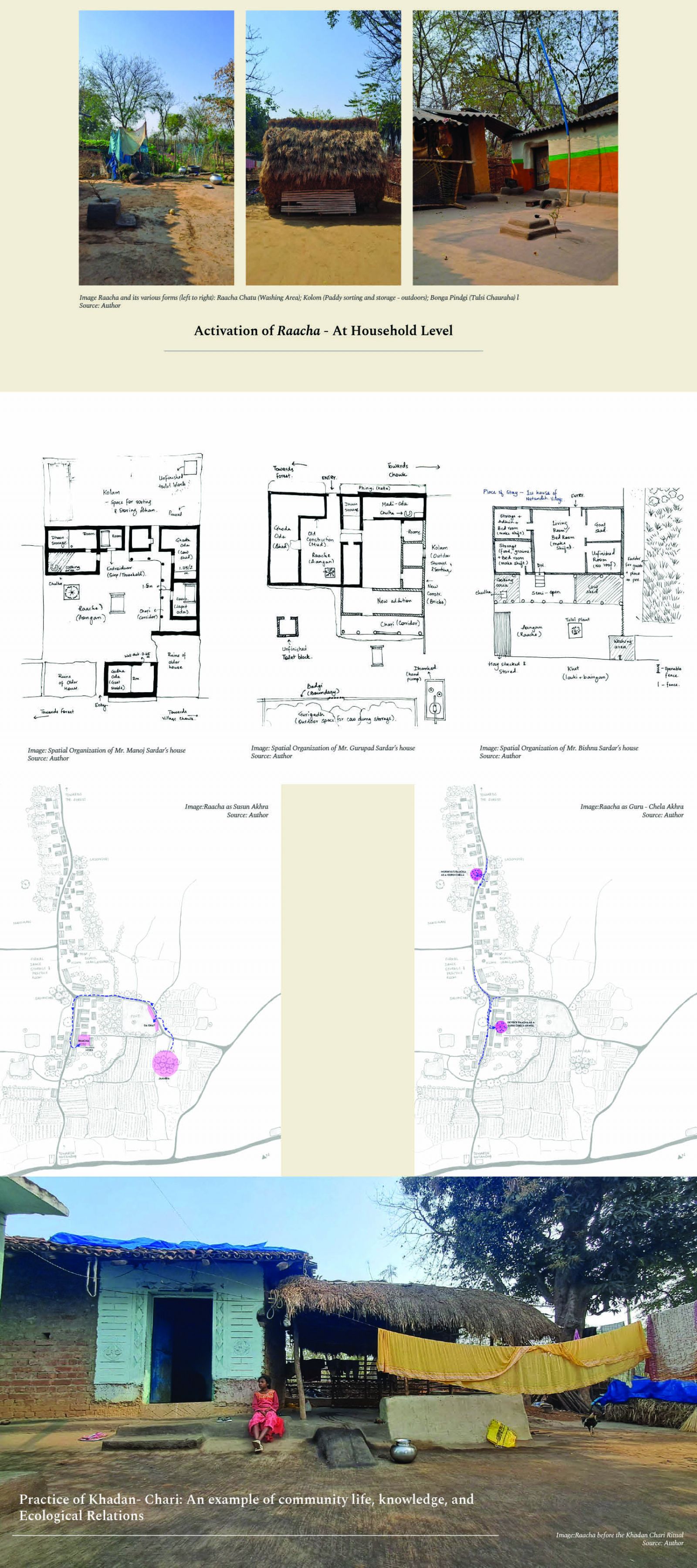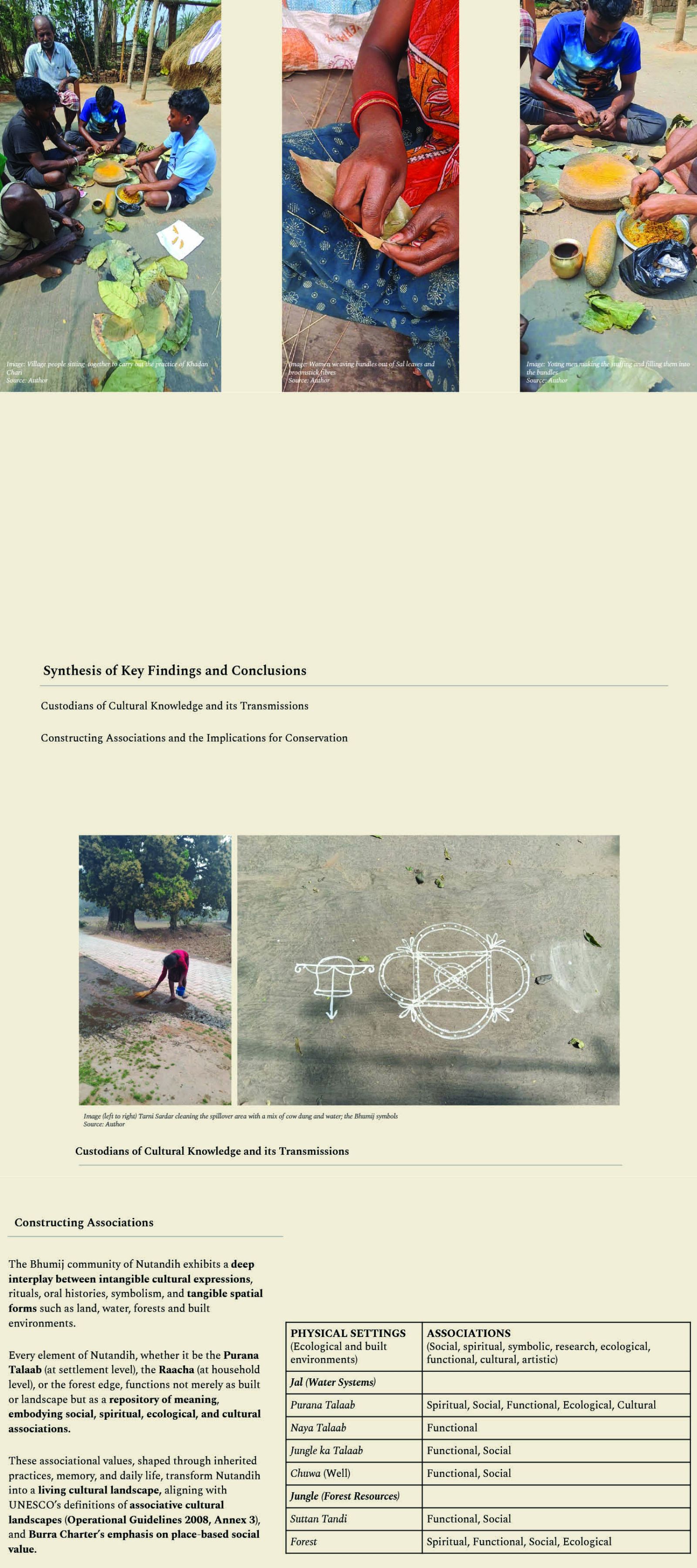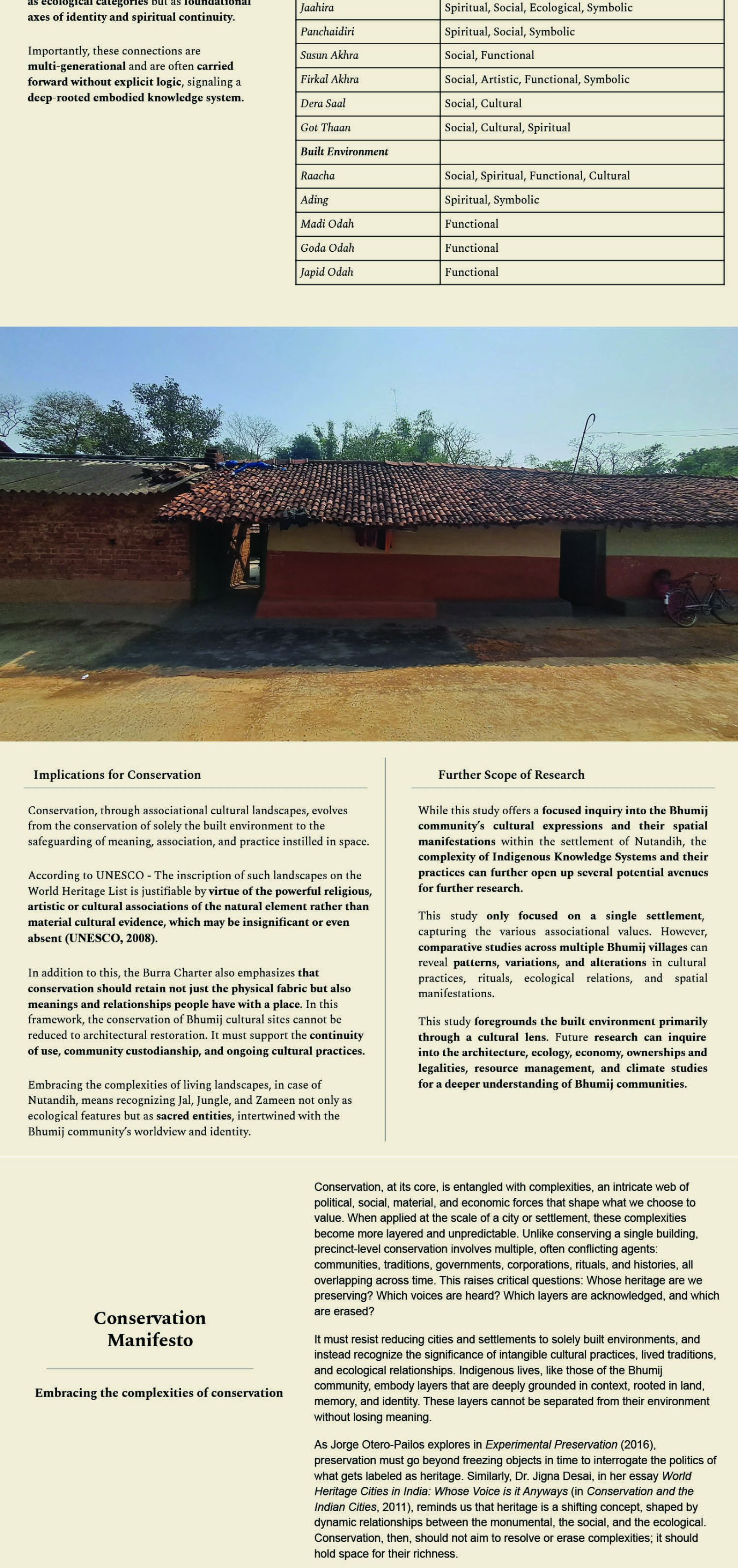Your browser is out-of-date!
For a richer surfing experience on our website, please update your browser. Update my browser now!
For a richer surfing experience on our website, please update your browser. Update my browser now!
This research investigates the cultural landscape of Nutandih, a Bhumij Adivasi village in Jharkhand, to understand the interconnections between intangible cultural expressions and tangible built environments. Through oral histories, rituals, festivals, art forms like Firkal Nritya, and everyday practices, the study explores how the Bhumij identity is deeply rooted in Jal, Jungle, and Zameen. Spatial elements such as Raacha, Akhra, sacred groves, and water bodies are revealed as living landscapes that embody social, spiritual, and ecological associations. The project highlights Indigenous place-making and aims to contribute to the recognition and preservation of Bhumij cultural knowledge systems.
